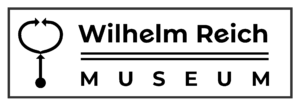Beskrivelse
“In the beginning of one’s task, one is enthusiastic about helping mankind. At the end of the same task, one is worn out and has lost most or all of the enthusiasm. Humanity, for whose benefit one believed to fight, has put too many dangerous obstacles in one’s path. One had to risk breaking one’s neck in overcoming these obstacles. Disillusionment has overcome the searcher and helper. Humanity itself, through its pestilent sergeants, has obstructed its own benefits. Therefore, the inventor or searcher acquires that definite expression of suffering and sorrow in his face (Beethoven, Galileo, Freud) which indicates that the enthusiasm to help has been replaced by ardent adherence to truth beyond any immediate practical interests. ”
Wilhelm Reich, M.D.
(opening of Where’s the Truth?)
Where’s the Truth? is the fourth and final volume of Wilhelm Reich’s autobiographical writings, an account of the last years of his life and scientific career drawn from his diaries, letters and laboratory notebooks. These writings reveal the details of the outrider scientist’s life—his joys and sorrows, his hopes and insecurities—and chronicle his experiments with what he called “orgone energy”.
A student of Freud’s and a prominent research physician in the early psychoanalytic movement in Vienna and Berlin, Reich emigrated from Oslo to America in 1939 in flight from Naziism, arriving in New York four days before the outbreak of World War Two. In New York, and later in Maine and Arizona, he pursued his research about orgone energy functions in the living organism and in the atmosphere.
Where’s the Truth? begins in January 1948, shortly after Reich became a target of the Federal Food and Drug Administration. Starting in December 1939, he’d already faced persecution by the U.S. government, having been mistaken by the State Department and FBI for both a Communist and a Nazi.
Starting in 1947, Reich was hounded by the FDA which, in 1954, obtained an injunction by default against him that enabled it to burn six tons of his published books and research journals, and to ban the use of one of his most important experimental research tools: the orgone energy accumulator.
Challenging the right of a court to judge basic scientific research, Reich was imprisoned in March 1957 and died in the U.S. Penitentiary in Lewisburg, Pennsylvania eight months later.
The text gathered in this volume shows Reich’s steadfast determination to protect his work. “Where’s the truth?” he asked a lawyer. And that question animates this volume and rounds out our understanding of a unique, irrepressible modern figure.












